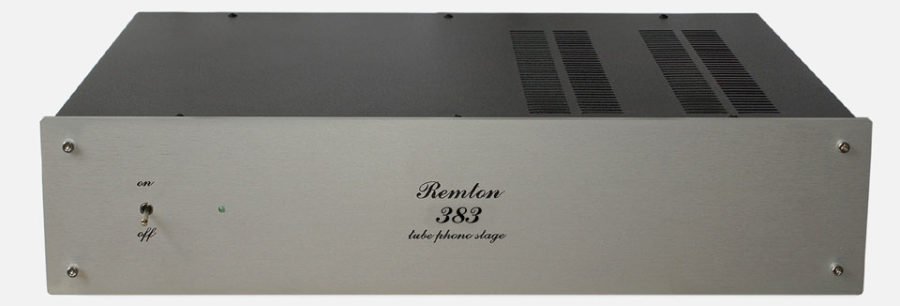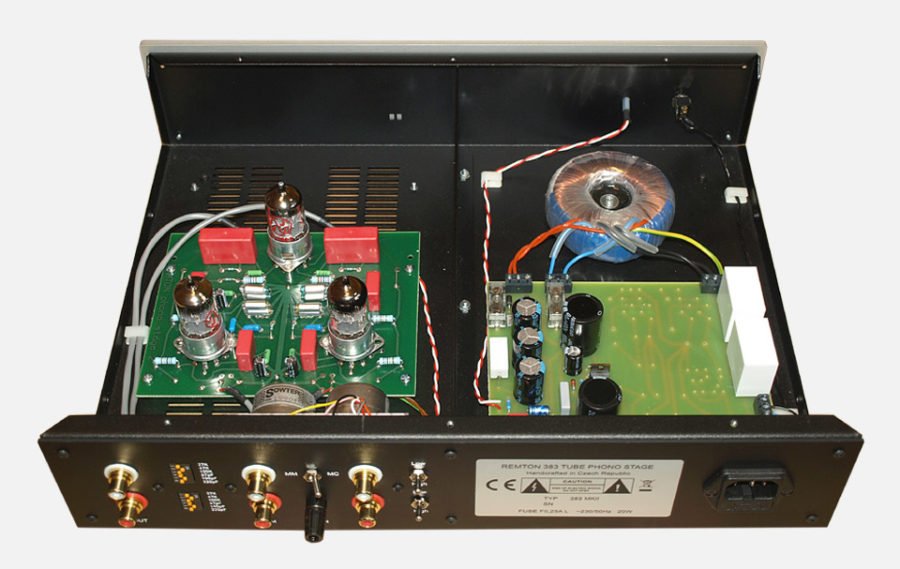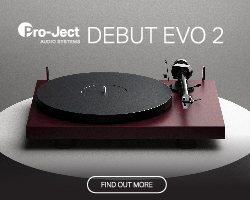The Remton 383 Mk 2 Phonostage is made in Prague, uses a trio of ECC83s valves and costs a smidgen over £1000, Janine Elliot tries it in her system for Hifi Pig.
There are an assortment of different phono stages entering the market at the circa-£1000 price point, in all shapes and sizes. Lots offer specifications and looks that would have cost much more some years ago, with many coming now from East European countries. Remton Audio, a company owned by Alexander Remmer, is a product of the Czech Republic and based in Prague, and whilst might well be a new name to many (indeed their first exhibit was only in 2013) they have already created a portfolio of phono stages that would put some established companies to shame.
Alexander has an obvious yearning for creating the best reproduction from your records. With a motto of “Real Vinyl Sound” and using proven traditional concepts and components Remton Audio are already creating products of good build and sonic clarity, and without a hefty price tag to match. Alexander favours moving magnet designs and only adds moving coil in “Mk2” versions as an “extra” facility using Sowter step-up transformers. The Mk1 version of the 383 reviewed here comes in at £550 and in two boxes; one for the power supply and one for the ECC83s/12AX7 tube based design. The Mk2 is now all in a single traditional black or silver fronted design of box, and with separate divided compartments to stop influences from the toroidal power supply, nothing exotic or wood, and even the valves are hidden inside rather than sticking through the top as in the Mk 1 incarnation. This model also has added Sowter step-up transformers for the MC cartridges, common to all Mk2 versions, and dip switches to allow you to fine tune to your cartridge of choice. With input impedance from 36 Ohm to 100k Ohm, and input capacitance choice of 0, 47 pF, 100 pF, 147 pF, 220 pF, 267 pF, and 367 pF, depending on permutation of the dip switches I could tailor my Kontrapunkt b to the optimum setting of 80Ohm load impedance via the 47k and 100K ohm switches and with the ‘MC-low’ switch, and 100pF capacitance. Their higher priced models use LCR RIAA design, whereas this £1050 offering, whilst having a similar appearance, uses a passive RIAA equalisation, zero negative feedback and excellent low noise output.
It is labelled as the ‘383’ because of the three matched JJ Electronic ECC83s tubes. Their cheaper 8382 model therefore has matched JJ ECC83S and JJ ECC82S tubes.My initial awareness was of a surprisingly efficient output and quiet noise level allowing the music to come through both loud and clear and all with a great depth; Saint-Saens Piano Concerto’s (EMI Aldo Ciccolini) had full power and weight with superb midrange, a propensity that ECC83’s in output stages give so well. It reminded me of the sound from my ECC83/EL84 Leak Stereo 20. A high level of three-dimensionality of sound was also observed, particularly in the depth of sound front-to-back. Everything was smooth, relaxed, unfettered. At no time did I find this phono-stage needy nor was it limited. Saint-Saens Organ Symphony (EMI London Philharmonic Orchestra, Serge Baudo) had bite in the bass that filled my listening room with music, showing how well the bass-to-low midrange frequencies were looked after by this phono-stage. Patricia Barber ‘Live in Paris’ had an amazingly energetic and forward bass line, and ride cymbals with a clarity that made for an involved listening session. David Gilmour ‘Rattle that Lock’ first track is called 5am, and the quietness of the amp during this relaxing start wouldn’t wake up anyone. Once David himself woke up I was compelled to listen and felt very close to the music and hence the spirit of what this latest album was all about. As a contrast Tangerine Dream ‘Rubicon’ gave me a chance to match the ECC83’s with VCO’s, VCF’s and VCA’s of the 1970’s. This was fun. A sound of delicacy and depth matched only by my treacle pudding that I heated up for tea. Unlike my pudding I never got sick of listening to the 383. No, this product had immense character. Only when reconnecting my choice $8,000 Manley did I notice the speed – particularly at the start of bass sounds – wasn’t quite as crisp and resolute, though there was more of it. Indeed, it was the bass/mid that got me engrossed in this design. The Tangerine Dream 180g album was less inviting through my own phono-stage, making me wonder whether the whole point of listening to music is technicality or to get involved inside the notes. The 383 certainly captured my mind with curiosity and intrigue, placing me closely involved in the music that at points during my review made me wonder if I should actually buy one for my own listening room. This was a product very much worth trying out, and if you should actually want a MM-only version, then of course one is available at a cheaper price. Their LCR RIAA phono stages at £2750 and £3250 would however be my next point of call.
CONCLUSION
There are many phono-stages at this price point, but very few have the musicality, richness and warmth that this design brings to bear. This product is well worth an audition and it got me hooked right from the start, and whilst detail in delivery is not quite on par with top-end and top priced amplifiers, at £1050 it was extremely good fun to listen to.
Build Quality: 8.3/10
Value for Money: 8.6/10
Overall: 8.45/10
Price at time of Review £1050
For:
Excellent retrieval of detail for the price
Warmth of sound
Cons:
The speed of sound not quite as good as some
Slight upper bass – lower mid emphasis
Basic looks
Janine Elliot




















































































































































































































You must be logged in to leave a reply.